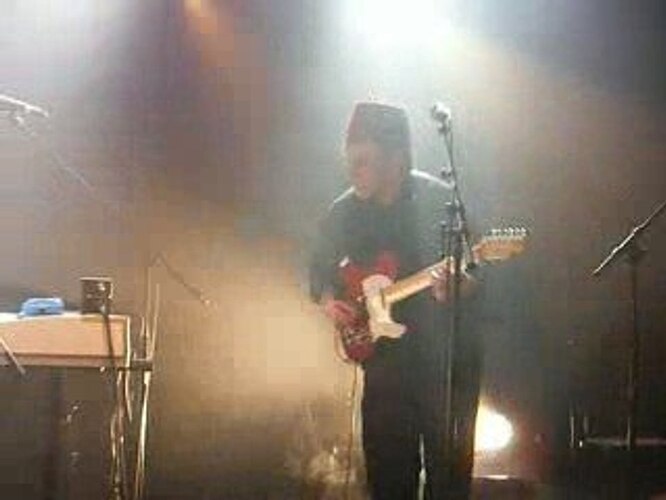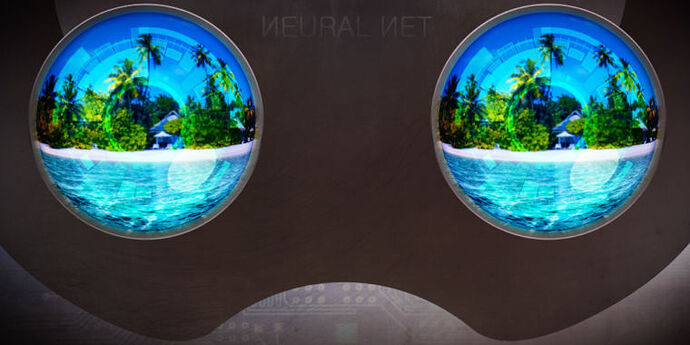Kicking off the General forum category with this article. This is wow!

SoCalled - These are the good old day - Vidéo Dailymotion
SoCalled à Gennevilliers (le Tamanoir): samedi 21 mars 2009
Kicking off the General forum category with this article. This is wow!
Captured. This is certainly a thought provoking development. If this technology were somehow allowed as evidence in criminal court cases, it would join with DNA, fingerprints, hair follicles, skin cells, et.al. in being argued as to its' validity by the leading experts in corresponding fields. If such technology was not allowed to convict or absolve people of crimes, it would at least, as mentioned, allow police and other entities to identify and possibly arrest dangerous individuals. Another obvious use of this enhancement would be the Paparazzis' desire to enhance photos they have taken of celebrities, while hiding in the bushes, while lurking in the shadows, or while peeking through windows. Perhaps other forum members can add to the list of possible uses for this enhancement method.
This is very interesting because I guess what it may be doing is using a very sophisticated algorithm that it constantly increasingly its accuracy to calculate the probability that a given low res image is indeed consistent with a know higher res image.
That is a pretty amazing combination of methods if indeed that is what is happening.
I ran across another really innovative use of technology last month. In this instance x-ray technology is being used to "read" scroll baked during the eruption of Mount Vesuvius.
http://www.nature.com/news/x-rays-reveal-words-in-vesuvius-baked-scrolls-1.16763
" If this technology were somehow allowed as evidence in criminal court cases, it would join with DNA, fingerprints, hair follicles, skin cells, et.al."
I have no doubt that this innovative and creative use of modern technology will be added to the already impressive panoply of interesting technical paraphernalia that has become a standard set of props in the courtroom drama.
Indeed the continued appearance of such interesting diversions would appear to be almost required to avoid attention eventually turning to the house of cards on which the entire artifice reposes.
It is not without good reason (no pun intended) that the standard against which the inferences drawn from results produced by these technologies together with inferences drawn from other evidentiary sources of a different nature is "proof beyond a reasonable doubt" in relation to which a group of 12 must unanimously consent to suspend their individual disbelief.
"Perhaps other forum members can add to the list of possible uses for this enhancement method."
I would imagine an especially lucrative application would be in the area of facilitating amicable divorces in cases in which a party accused of engaging in a dalliance might otherwise consider the evidence to be subject to challenge.
That's pretty amazing. It does surprisingly well.
"engaging in a dalliance"
Dalliance enhancement=amicable divorces. Brilliant.
I got a very clear reminder today of how much technology has changed in recent years.
Just started listening to an audiobook recording that was made in 1992 and the quality would simply not be acceptable today.
You're doing it wrong. Seniors are supposed to talk about the "good ol' days!"
These might be the good old days.Here's a video to match the quality of "Oldbooks1" audiobook.

SoCalled à Gennevilliers (le Tamanoir): samedi 21 mars 2009
1 year 10 months ago(can it be), "hungryghost" started this general category section of the forum with a post containing an article from "Ars Technica" about neural networks and images. So here is a recent article from "Ars Technica" about convoluted neural networks and machine learning that, though mostly incomprehensible to me and I suspect most people, does contain enough dumbed down general information to give one a good idea of where AI has been and is headed, and how it more and more will be part of our everyday lives. It explains, for example, how one can take a photo of a small section of a bike tire, where the tire size dimensions of the tire are printed, and one can be in a bike shop years later in order to buy a new tire, but having forgotten to the tire size, one can type "tire" into Google photos search on one's phone and have that photo of a small section of a tire be shown. The article also shows how complex and difficult it is to imitate what our brains constantly do naturally, I believe. Yet it's a brain cramping long article.
 Ars Technica
Ars Technica

A landmark 2012 paper transformed how software recognizes images.
Interesting that they only just implemented this super res zoom into their pixel phones. But they are doing some amazing things with images and photography.